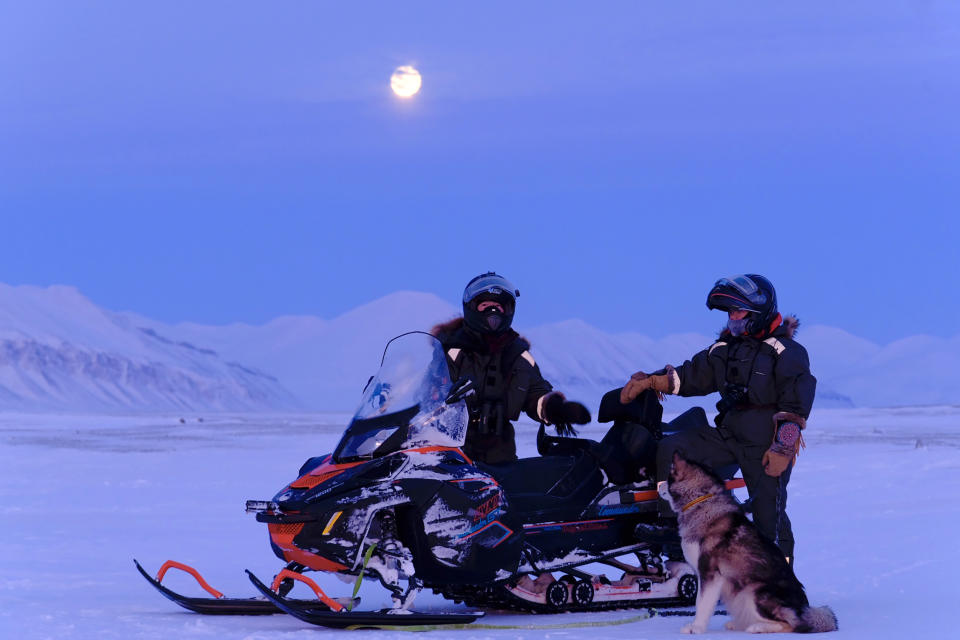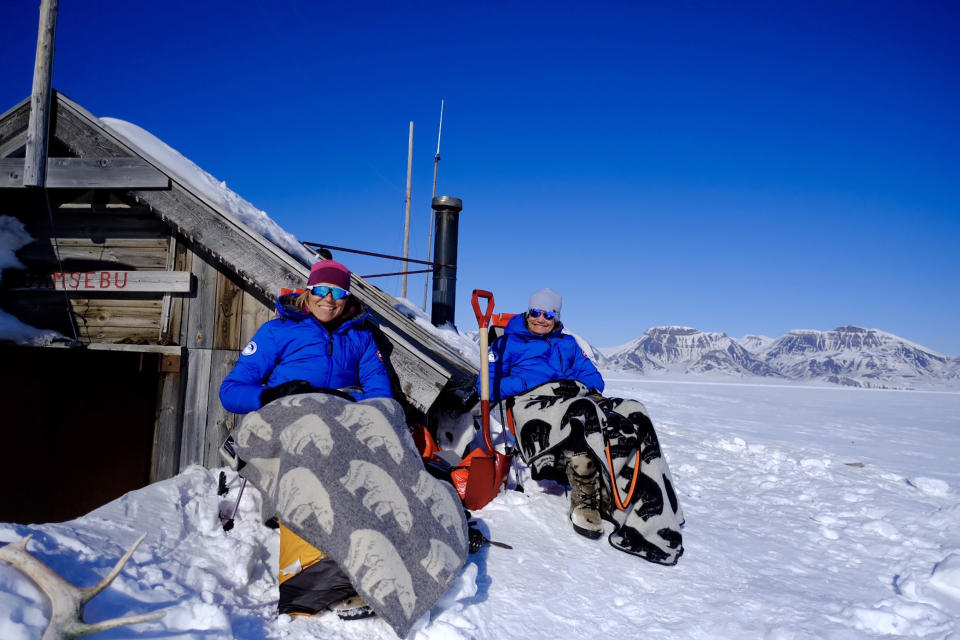No end — and no one else — in sight for explorers stranded in a tiny Arctic cabin
With only reindeer and polar bears for neighbors, two women Arctic explorers are enduring the world’s most extreme lockdown conditions with no clear end in sight as the coronavirus pandemic leaves them stranded.
Sunniva Sorby, 59, and Hilde Fålulm Strøm, 52, co-founders of the Hearts in the Ice polar education campaign, set off in August to the Svalbard archipelago, located between Norway’s mainland and the North Pole, to collect environmental data and raise awareness about climate change. They were due to return this month but the vessel designated to pick them up was canceled amid global travel restrictions.
“There have been tears,” Strøm told NBC News during a video call from her post in the Arctic Circle. “You are scared and you feel small in this big environment.”

The pair — the first women in history to overwinter in the Arctic without a male team member — are settled in at the remote Basembu trappers cabin — built in the 1930s for whalers — about 87 miles from any other people.
Strøm, a Norwegian, has spent more than 22 years living in the far north leading a variety of Arctic expeditions, while Sorby, a Canadian, spent 23 years working as a guide and historian in Antarctica.
Their collective experience is reassuring, they said, and has helped them navigate the challenges of storms, aggressive polar bears and endless hours of darkness.
Climate change is affecting the Arctic much faster than the rest of the planet, with warming happening at a rate double the global average.
As citizen scientists, they have been collecting weather and wildlife data, monitoring clouds, the aurora borealis, sea ice and organisms for several international agencies, including the Norwegian Polar Institute and NASA. Their project is funded by a range of donors and sponsors from around the globe.
They’ve tested an array of new technology, including electric snowmobiles, and conveyed their results to not only scientists but also more than 5,000 children through online workshops.
Their daily chores to simply survive also involve a lot of work collecting firewood, and ice for water, since there is no indoor plumbing. Solar and wind power fuel the rest of their activities.
Download the NBC News app for latest updates on the coronavirus outbreak.
Leaving their 215-square-foot cabin is a production. They have to don more than 20 pounds of clothing to shield them from the elements, plus carry a flare, a Swiss Army knife and a rifle.
“It’s not just a stroll. We have to go out prepared for the worst,” Sorby said.
Having only each other for companionship apart from their calls to the rest of the world, they’ve navigated the solitude by maintaining a routine of sleeping regular hours, keeping active and doing normal activities such as watching movies, dancing and cooking.
“Neither one of us have lived this long with anybody 24/7,” Sorby said, adding she imagines people living in lockdowns around the globe are facing similar tensions.
While coping with the distance from their loved ones by immersing themselves in their routine and the awe of their surroundings, they said the unpredictability of the environment has posed unique challenges.

On one occasion, a polar low — referred to as Arctic hurricane — ripped open the door to the cabin, leaving the pair scrambling to stay sheltered, unable to make repairs until the winds died down. In another instance, a pileup of snow overnight made it impossible for them to open the door, leaving them to resort to climbing out a window.
“We were so thankful we do yoga,” Sorby said of the narrow escape.
Although well stocked with supplies, they’re rationing some of their food given the uncertain length of their stay. They’re planning for a new supply of essentials and equipment, anticipating they won’t leave the site until September and there remains the chance they’ll have to stay another winter.
Full coverage of the coronavirus outbreak
At a time when lockdowns have postponed research projects and disrupted climate data collection around the globe, they see the extension of their work as a silver lining, delivering welcome information to the scientific community.
“They have very little understanding what’s underneath the sea ice and we can continue collecting that for them, which gives them a big understanding around biodiversity and what’s happening in the ocean with the ice loss up here,” Sorby said.
Their mission has significant social implications, as well, especially since they have marked the first time that women have passed the winter in the Arctic without the presence of a man.
With that in mind, they decided to add personal flair to the experience, both packing a little black dress among the essentials in order to throw celebrations throughout their stay.
“We dressed up for Christmas with our heels and our dresses outside with our rifles over us. It was ice cold,” Sorby said.
More significantly, they said it marks women’s leadership in the fight against climate change. “Mother Nature needs her daughters and we have answered the call,” she said.

